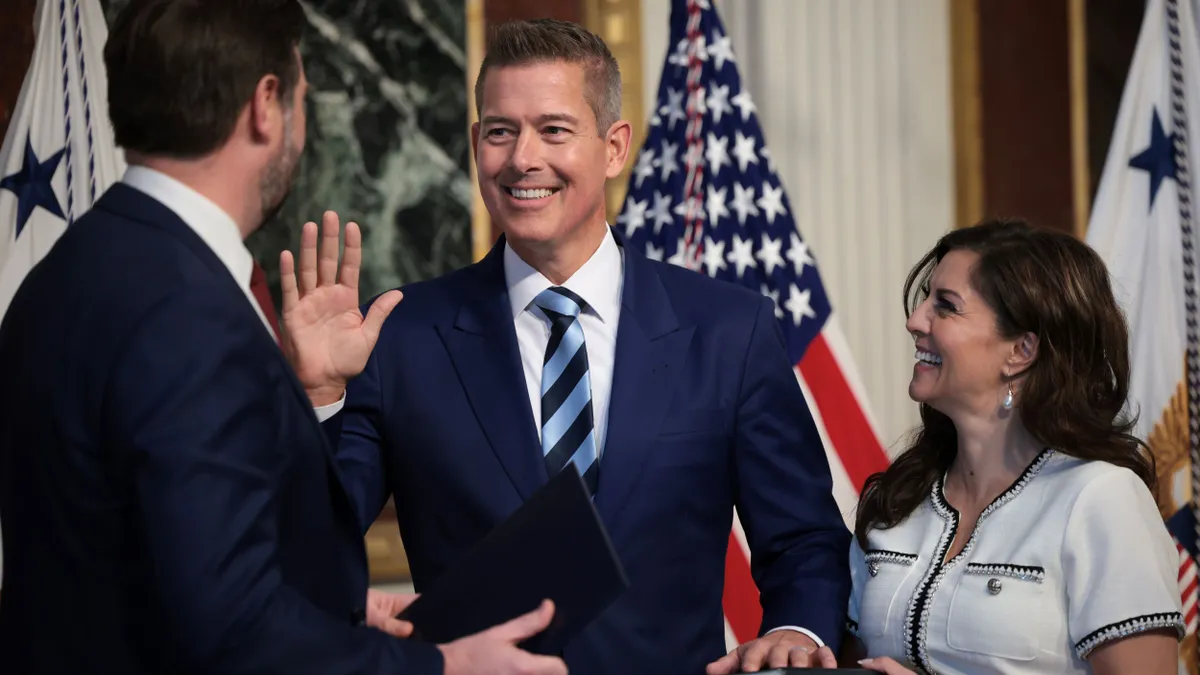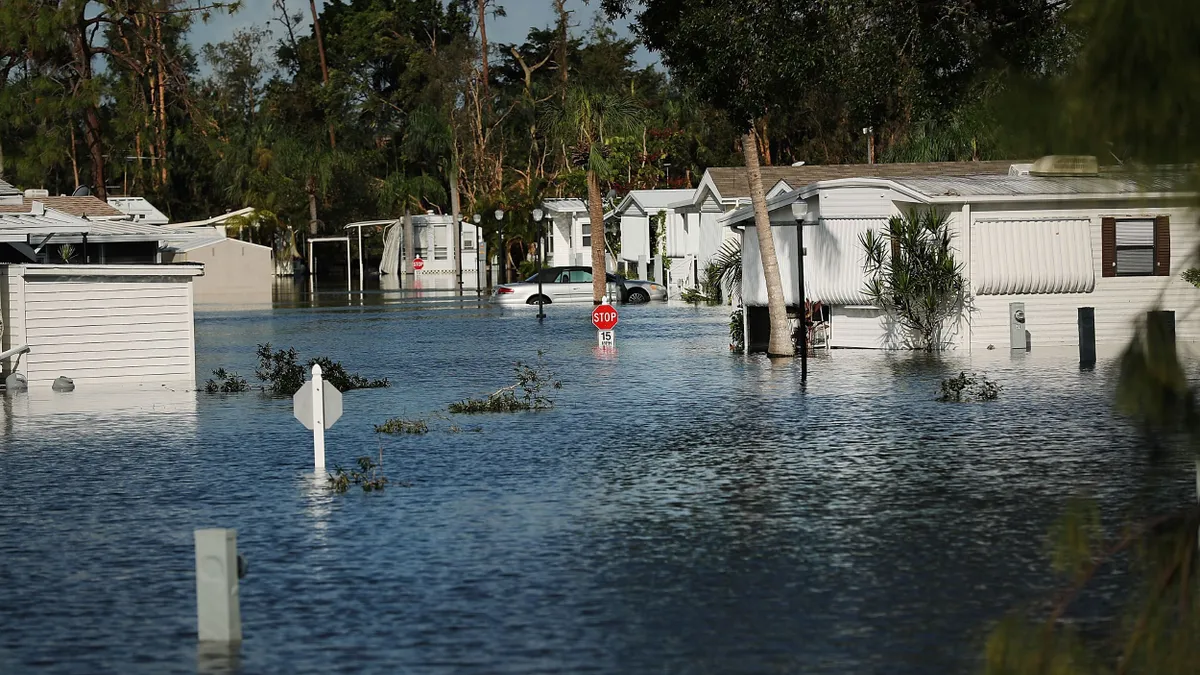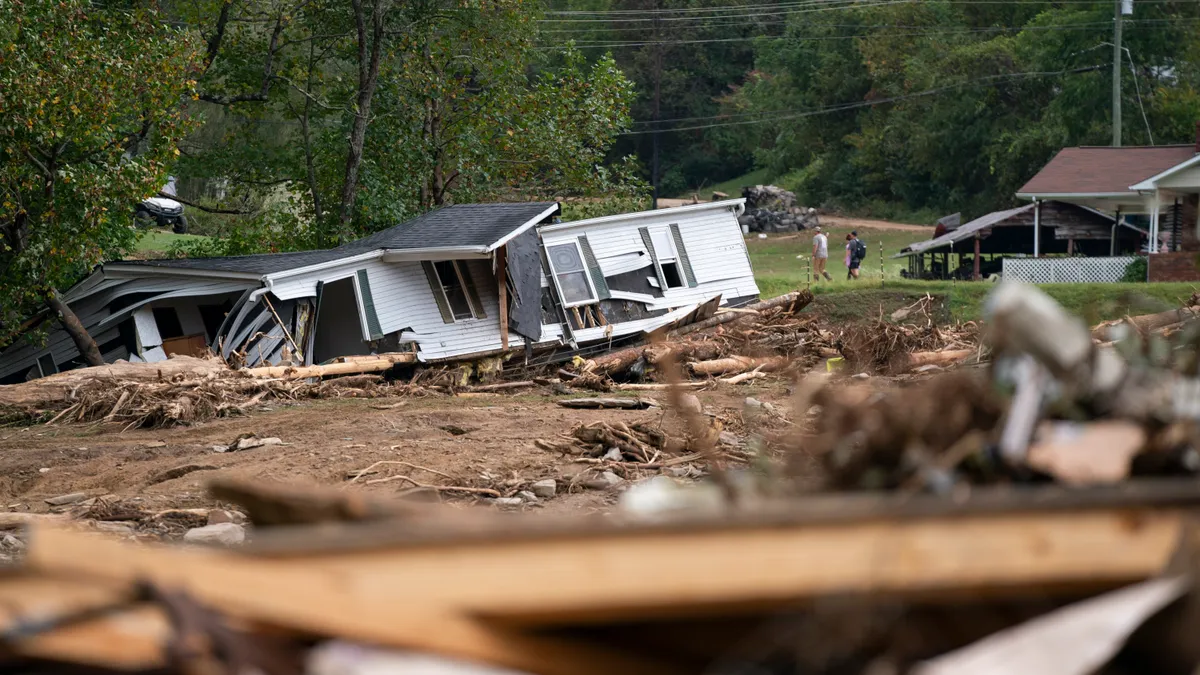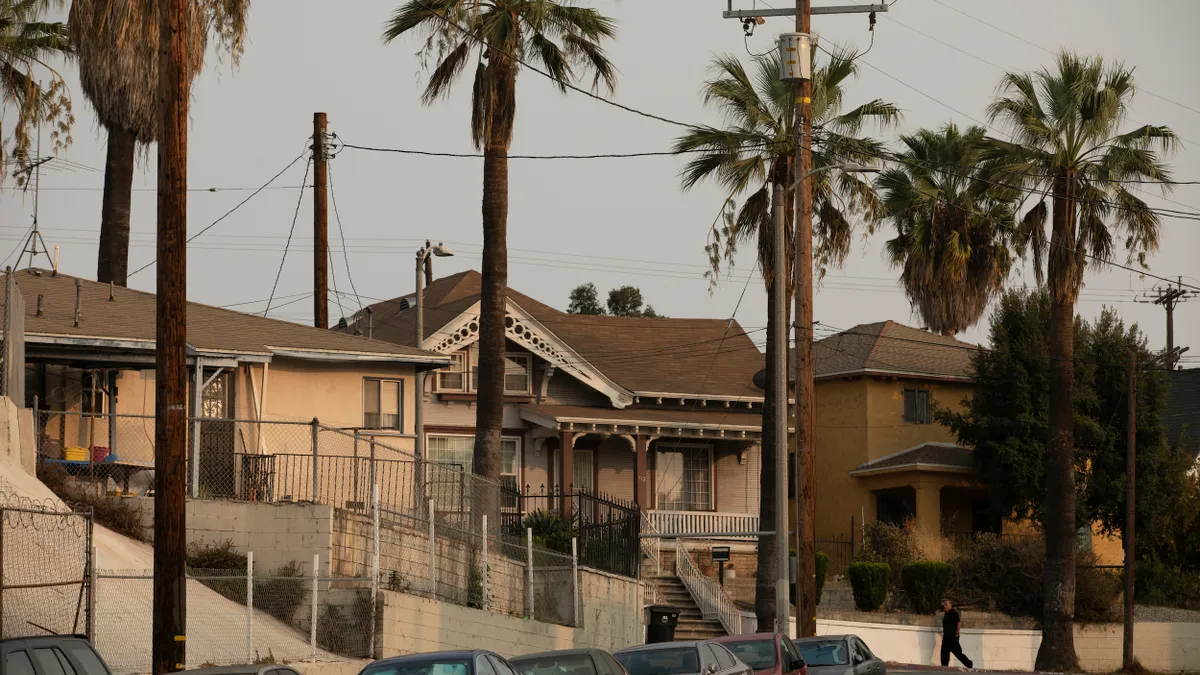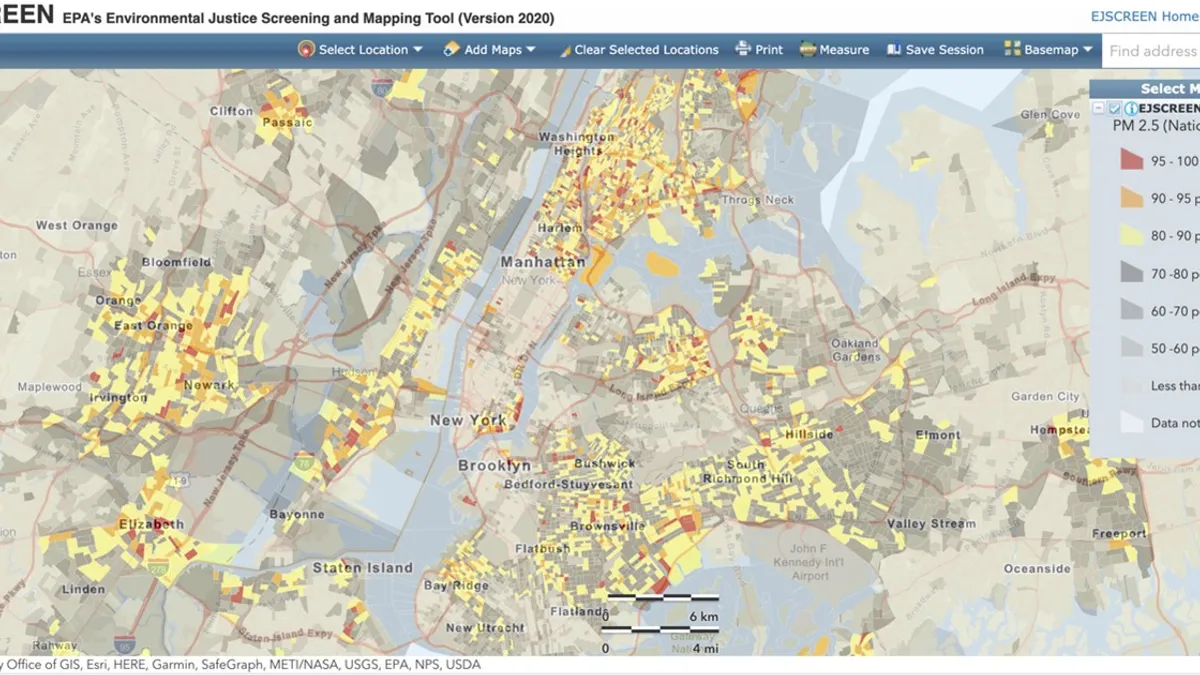Despite a recent infusion of federal dollars, the health of the country’s aging water infrastructure has plateaued amid burgeoning environmental stressors and new cleanup demands, according to the American Society of Civil Engineers’ 2025 Infrastructure Report Card, released last week.
Drinking water infrastructure notched a C-, while wastewater got a D+ and stormwater tied with transit for the category with the lowest grade, a D. These water grades are unchanged since ASCE’s previous report card in 2021.
Funding from the 2021 Infrastructure Investment and Jobs Act helped lift the U.S.’ overall infrastructure grade to C, its highest-ever, according to ASCE, which means the infrastructure shows general signs of deterioration and requires attention. The $1.2 trillion IIJA contained about $550 billion in new money, with nearly $69 billion for water infrastructure. This includes roughly $14 billion in increased funding for state revolving loan funds, which are loan programs for water and wastewater treatment, as well as $15 billion for lead service line replacement and $10 billion for PFAS remediation.
However, that funding could take about a decade to be fully disbursed because it must go through multiple layers of government administration, according to Boston-based L.E.K. Consulting. Inflation has also sapped some of the funds’ buying power, while increasingly erratic and extreme weather is causing additional strain on the built environment, according to the EPA.
Decades of underinvestment and water utility rates lower than the actual cost of operation have caught up with the country, Carol Haddock, vice chair of ASCE's Committee for America's Infrastructure, said in a news briefing last week.
“What we're seeing is that investment allowed us to eat away some of the backlog while new backlog was also being generated,” Haddock said. “We've also seen, over the last few years, a very significant increase in the cost of operations on the utilities, the cost of electricity, the cost of chemicals and the cost of our employee workforce.”
Utilities face more stress
Utilities are generally supported by ratepayers, so there is an expectation that the rates should cover a utility’s needs. However, only 20% of water utilities reported being fully able to cover the cost of drinking water services even while ratepayers’ bills keep rising, according to ASCE.
Currently, private and public water and wastewater utilities are all underfunded, according to a March 11 report from New York-based consulting firm McKinsey & Co. The U.S. water utility sector faced an estimated $110 billion funding gap in 2024, which is nearly 60% of utilities’ overall spending. By 2030, this gap could increase to approximately $194 billion.
The growing funding gap stems in part from the need for utilities to manage increasingly complex climate hazards, particularly water stress and flooding, per McKinsey. Water stress is driven by both supply and demand; it refers to a combination of agricultural and industrial water use, policy changes and climate change. Flooding includes rainfall, rivers and coastal flooding.
“Although water utilities did not create these challenges, they must not fail to provide solutions as well as drinking water and wastewater services. If they do, the consequences for communities could be catastrophic,” according to McKinsey.
At the same time, water utilities must implement treatment advances necessary for emerging contaminants like PFAs, according to Haddock. Per-and polyfluoroalkyl substances, or PFAS, are a group of widely used “forever chemicals” that can pose serious human health and environmental risks. Cleaning up PFAS in the U.S. water supply has become an increased area of focus of many major architecture, engineering and construction firms following an April 2024 EPA ruling that designated two types of PFAS as hazardous substances.
Many jurisdictions are trying to tackle these problems. Texas, for example, which could see a severe water shortage by 2030, is poised to spend billions to repair old infrastructure and to create new sources, according to the Texas Tribune. Similarly, California is investing in a slew of projects that address flooding, drought and other extreme weather in order to shore up its water supplies, per the Public Policy Institute of California.
Indeed, improving U.S. water infrastructure requires the public and private sectors to work together, said American Water CEO M. Susan Hardwick in a March 25 news release.
ASCE’s new report card “is a stark reminder of the urgent need for significant and continued investment in water and wastewater infrastructure across the country,” said Hardwick. “Our nation continues to lack when it comes to investing in critical infrastructure, particularly in these sectors.”
Better data needed
One of the barriers to improvement is a lack of a comprehensive understanding of water infrastructure conditions and challenges, according to ASCE. Only about 30% of utilities have fully implemented an asset management plan, and just under half are in the process of implementing one.
For example, there isn’t much data available about stormwater, one of ASCE’s newer categories, which makes it difficult to demonstrate its full funding needs, said Pat Lach, member of ASCE's Committee for America's Infrastructure, in the news briefing. Establishment of a nationwide database for stormwater assets would help.
“There are still many areas of the nation for all the water categories that don't have great asset management systems to understand where their infrastructure is, what's the condition, the age, the materials, and when was the last time it was replaced,” said Lach. “You need to know what infrastructure you have and what are the demands on it for the future.”
Despite their constraints, many drinking water utilities are improving their infrastructure through asset failure prediction technologies, which help identify issues before they become failures, according to ASCE.
Water funding up for debate
It’s not yet clear how the Trump administration is thinking about water funding. Many IIJA funding streams, including those for water, are in a holding pattern while the Trump team examines its various programs for compliance with the president’s executive orders.
Still, Kristina Swallow, a professional engineer and former ASCE president, said in the media call that “100% [infrastructure] is a bipartisan interest area, focus area and commitment.”
“The investment levels that we saw under the last administration have really started to move the needle, and we’re looking forward to advancing that conversation as we move into this administration,” said Swallow.
Members of the House Committee on Transportation and Infrastructure got input from industry members in a March 11 hearing on the Water Infrastructure Finance and Innovation Act and state revolving funds.
Every dollar invested in water systems yields exponential returns in public health, economic growth and environmental protection, National Utility Contractors Association past Chairman Dan Buckley testified at the hearing.
“Clean water and sanitation are not luxuries — they’re the lifeblood of civilization,” said Buckley. “We need more federal investment. The scale of this crisis demands it. As Congress debates the future of federal spending, lawmakers should consider reallocating more dollars towards these essential programs.”








